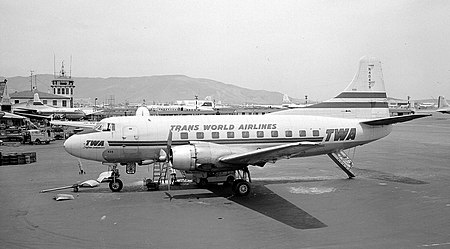TWA Flight 260
1955 in New MexicoAccidents and incidents involving the Martin 4-0-4Airliner accidents and incidents caused by instrument failureAirliner accidents and incidents in New MexicoAviation accidents and incidents in 1955 ... and 5 more
Aviation accidents and incidents in the United States in 1955Aviation accidents and incidents involving controlled flight into terrainFebruary 1955 events in the United StatesHistory of Bernalillo County, New MexicoTrans World Airlines accidents and incidents

TWA Flight 260 was the Trans World Airlines (TWA) designation for a flight from Albuquerque, New Mexico to Santa Fe, New Mexico. On February 19, 1955, the 40-passenger Martin 4-0-4 prop plane used by TWA for that route crashed into the Sandia Mountains. Its deviation from the normal flight path, initially believed to be the result of pilot error, was revised to "unknown" given that the contribution of other factors could not be definitively ruled out.
Excerpt from the Wikipedia article TWA Flight 260 (License: CC BY-SA 3.0, Authors, Images).TWA Flight 260
Domingo Baca/TWA Route,
Geographical coordinates (GPS) Address Nearby Places Show on map
Geographical coordinates (GPS)
| Latitude | Longitude |
|---|---|
| N 35.194 ° | E -106.442 ° |
Address
Domingo Baca/TWA Route
Domingo Baca/TWA Route
New Mexico, United States
Open on Google Maps





